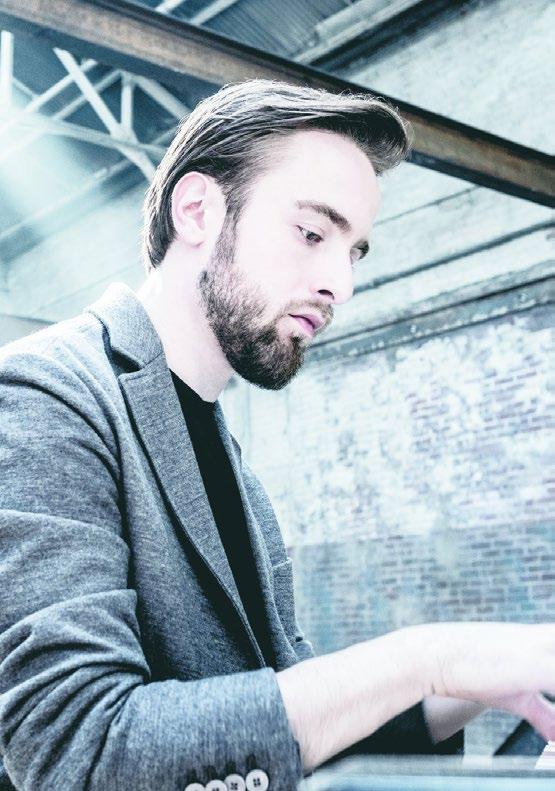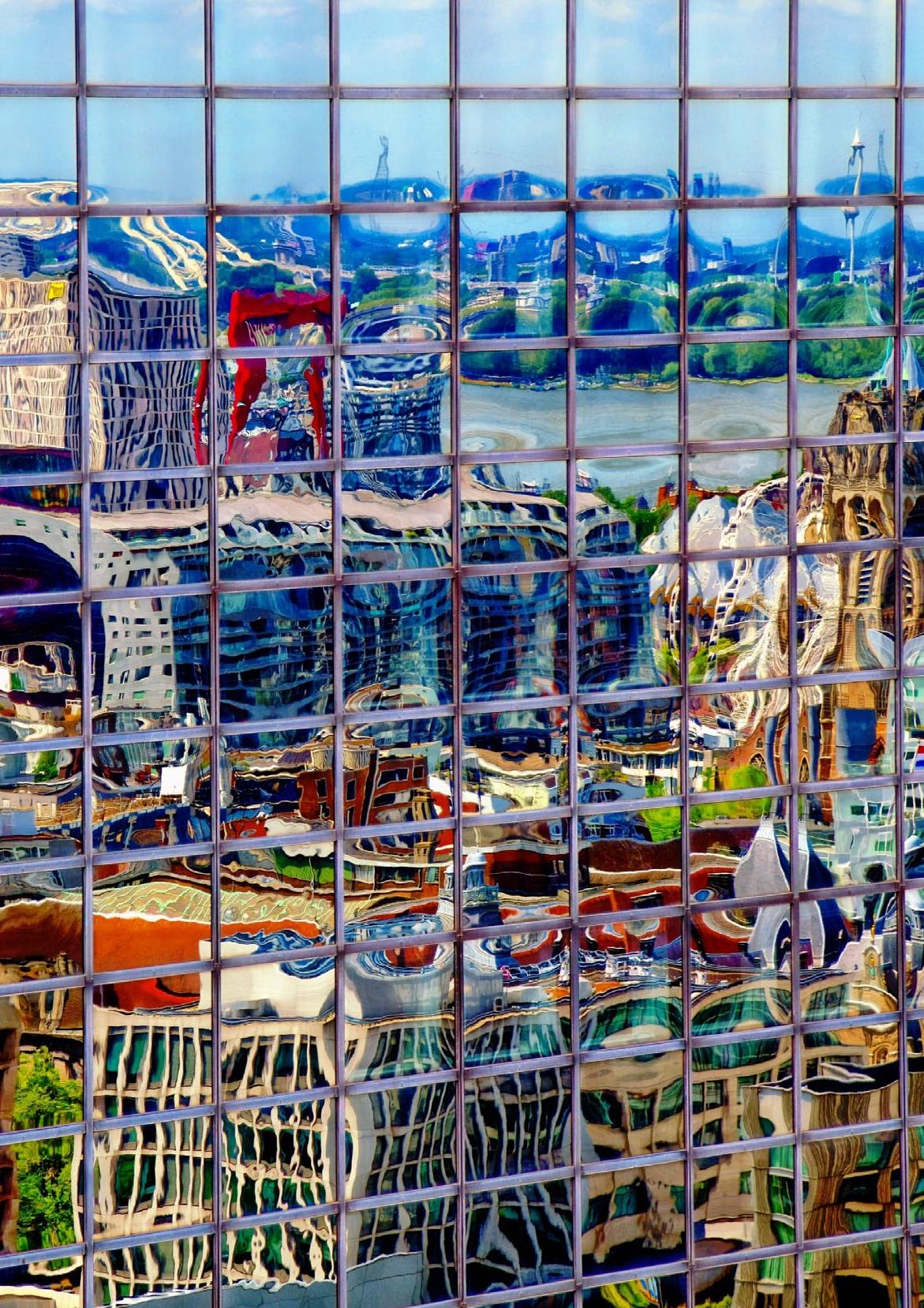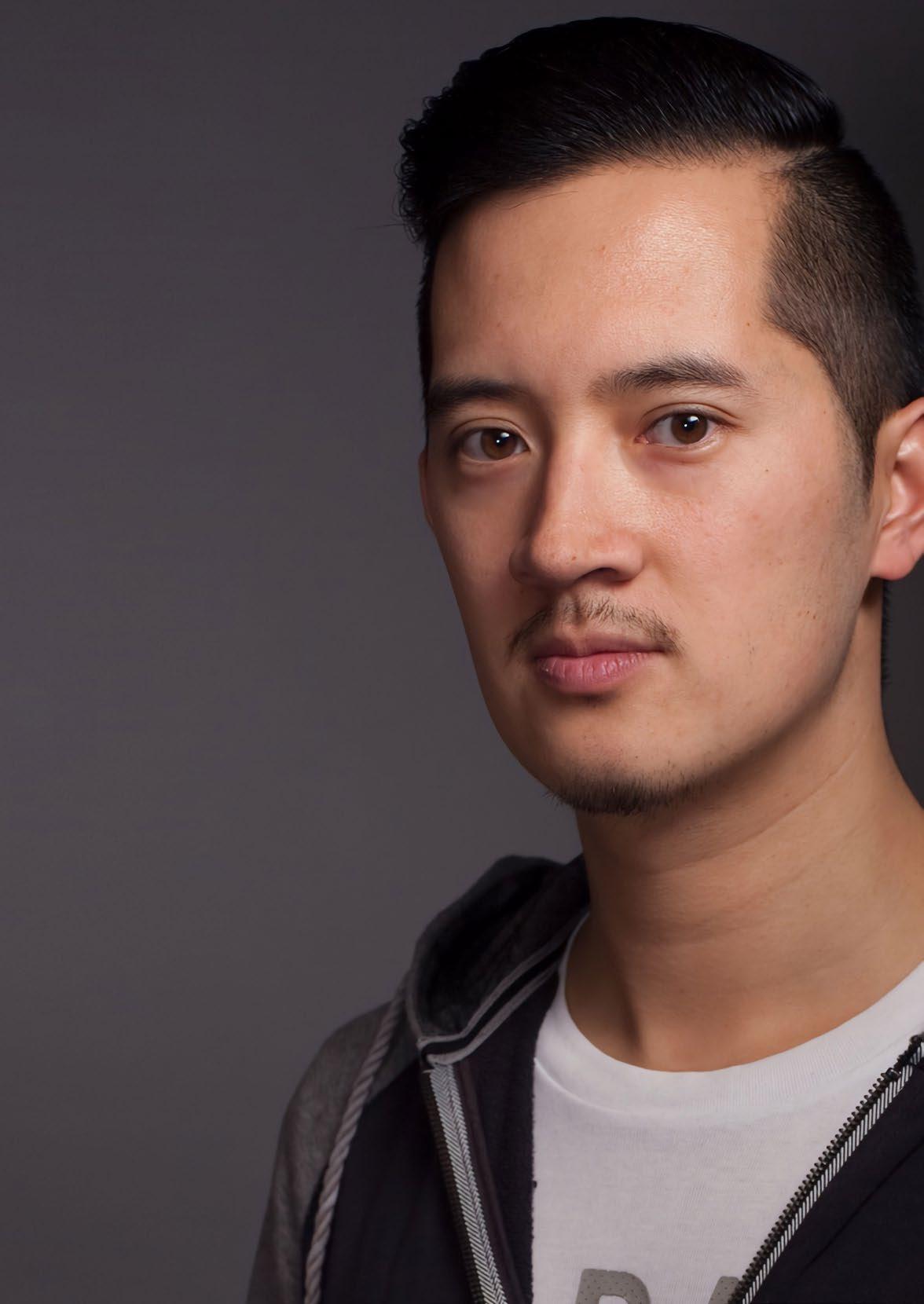A musical roller-coaster
Sensational heights and the depths of heartache in an evening at full throttle… From Barber’s moving Adagio via Bates’ incredible Piano Concerto to the world
premiere of Roukens’ thrilling First Symphony - ‘Kaleidoscopic’. Buckle up and phones o !

A nine-year-old Samuel Barber wrote a note to his mother in which he divulged a troubling secret and asked her not to cry: ‘I was not meant to be an athlet [sic]. I was meant to be a composer, and will be I’m sure. I’ll ask you one more thing.— Don’t ask me to try to forget this unpleasant thing and go play football.—Please—’
It’s a knockout! With his dream come true, Barber became a composer. As an admirer of Brahms he wanted nothing more than to express his feelings through music. His frst composition, written when he was just seven, he entitled Sadness. Barber won many prizes from a young age, including the Prix de Rome. Once Barber had arrived in Rome, the director of the American Institute challenged him to write a string quartet. Accepting the challenge, he rented a house in the Austrian Alps and set to work. At the end
of summer he wrote to cellist Orlando Cole: ‘I have just fnished the slow movement of my quartet today, and it is a knockout!’ No one less than Toscanini asked him to score the Adagio for a string orchestra. Barber sent the score to the celebrated conductor, who promptly returned it without comment. Tis came as bitter disappointment to Barber, but the misunderstanding was quickly resolved. On 5 November 1938, having studied the score in detail, Toscanini conducted the Adagio for Strings for an American radio station entirely by memory. Te overwhelming climax of penetrating strings lef no one unmoved. Te music received worldwide attention when it was played at the funeral of Roosevelt, encapsulated the sadness of the world at the murder of J F Kennedy, and performed in countless concert halls in response to the 9/11 attacks of 2001. Its power to enrapture was also recognised
Keuris.
by DJ Tiësto and Armin van Buuren, who both reworked the Adagio into steamy techno versions.
Virtuoso pyrotechnics
Te American composer Mason Bates would undoubtedly appreciate such a cross-over. Also performing under the name DJ Masonic, he expressed the hope that his Piano Concerto would switch pop musicians on to classical Music, and vice versa. Much of his music combines traditional instruments with electronic sounds, and the composer himself is ofen to be found behind his laptop, amongst all the other musicians. But for his latest work – written during the pandemic for Daniil Trifonov – he lef the electronics behind him and delved deep into history. His inspiration for the frst movement came from the Renaissance, in which the pianist plays ornamentation over a four-part chorale, led by the lute-like pizzicato of the string section. Te second movement looks back to the Romantic period of the nineteenth century, a source of inspiration shared with Barber. Te soloist is consumed by melancholy, whilst the orchestra attempts to bring him out of his shell. It is only when the orchestra plays at its most powerful that the soloist is persuaded to join in. Te fnal movement brings us right up to date with cool jazz rhythms, sparkling wit, and a freworklike fanfare. In January of this year honorary conductor of the Rotterdam Philharmonic Orchestra, Yannick NézetSéguin, premiered the work in Philadelphia with, of course, Trifonov as soloist. Each review sought to outdo the others
in its praise. Tere was great admiration for the way in which the concerto gave the soloist the scope to demonstrate all their qualities in a score ranging from technical pyrotechnics to intensely felt melodies. Admiration was also given to the brilliant instrumentation and virtuoso percussion section. Reviewer Linda Holt described how, in the fnale, ‘the orchestra roared, drums thundered, […] Nézet-Séguin conducted with a wildness I’ve never seen in him before, and yet, the concerto ended in the perfect marriage of reason and emotion, tenderness and the clamor of enveloping sound.’
Night-time roller coaster
You could say that Joey Roukens’s calling card was music full of rhythmic energy. In many of his orchestral works it’s pure adrenalin that pours through the orchestra. Tere are elements of this in his First Symphony too. We got a foretaste of this during the International Conducting Competition Rotterdam, at which Night Flight (the symphony’s third movement) was performed in the fnale of the programme. Sharing Barber’s precocity, Roukens penned his frst melodies in a notebook as a seven-year-old. ‘When I was a boy aged eleven or twelve I would fantasise about what life would be like as a future composer, and I dreamed that I would write symphonies – not operas or piano concertos, or chamber
music - but symphonies. So when music programmer Floris Don asked me to write a substantial new orchestral work for the Rotterdam Philharmonic Orchestra, my immediate response was to think of a symphony. I was already approaching forty, I’d written quite a lot of orchestral pieces, and it seemed like a good time to set to work.
Te symphony is a kind of summation or kaleidoscope of all those musical interests and techniques that had occupied me over the last ten years.’
Te Roukens interpretation of post-minimalism, echoes of old music, (the Elizabethan airs of Dowland), the slow, elegiac adagios reminiscent of Mahler and Sibelius, it’s all in there.
‘With Night Flight I imagine a kind of roller coaster ride through the night, looking down upon a lively city scape, with a musical palette that is both dark in tone yet colourful and full of irregular time signatures and grotesque, fairground elements. Tere is a quiet and delicate opening to the extremely slow last movement Landscape. Te music grows gradually, becoming more expansive and indulgent, eventually to evoke an endlessly majestic landscape, before once more dissipating into the small, fragile sound with which the movement began.’
Carine Alders
The soloist is consumed by melancholy, whilst the orchestra attempts to bring him out of his shell.
André de Ridder - Conductor
Born: Berlin, Germany
Education: Universität für Musik und darstellende Kunst Vienna; Royal Academy of Music London
Guest appearances: Chicago Symphony Orchestra, New York Philharmonic, Hong Kong Philharmonic Orchestra, Melbourne Symphony Orchestra, BBC Symphony Orchestra, Royal Concertgebouw Orchestra, Finnish Radio Symphony Orchestra, Orquesta Nacional de España, Ensemble Intercontemporain
Specialisation: contemporary music in unusual configurations
Cooperations: cartoon band Gorillaz, jazz musician Uri Caine, pop musician Jonny Greenwood (Radiohead) and Bryce Dessner (The National)
Opera: Komische Oper Berlin, Dutch National Opera, English National Opera, Irish National Opera, Staatsoper Stuttgart, Central City Opera Colorado
Founder: Music collective Stargaze, think tank for genre-crossing cooperations Debut Rotterdam Philharmonic: 2019

Born: Nizhniy Novgorod, Russia
Education: Gnessin School of Music Mosow with Tatiana Zelikman; Cleveland Institute of Music (piano and composition)
Awards: Chopin Competition Warsaw (2010); Tchaikovsky Competition Moscow; FrancoAbbiati Award (2013); Musical America’s Artist of the Year (2019)

Breakthrough: 2011, First Prize Arthur Rubinstein Competition Tel Aviv, also Pnina Salzman Prize, Chamber Music Prize and Audience Favorite Prize
Solo-appearances: Berlin Philharmonic, Staatskapelle Dresden, Tonhalle Orchester Zürich, Royal Concertgebouw Orchestra, symphony orchestras of Boston, Chicago, New York Philharmonic, Los Angeles Philharmonic
Recitals: Carnegie Hall New York, Wigmore Hall London, Musikverein Vienna, Suntory Hall Tokyo, Salle Pleyel Paris
Debut Rotterdam Philharmonic: 2016
Daniil Trifonov - piano Artist in Residence with the Rotterdams Philharmonic Orchestra 2022–2023
Photo: Dario Acosta
Photo: Marco Borggreve
Agenda
Sun 16 October 2022 • 10.30 Music for Breakfast 1 Chamber Music by Pärt, Ter Veldhuis, Martinů and Ravel
Thu 27 October 2022 • 20.15
Fri 28 October 2022 • 20.15
Sun 30 October 2022 • 14.15
conductor Han-Na Chang cello Victor Julien-Laferrière Prokofiev Symphony no. 1 ‘Classical’ Shostakovich Cello Concerto no. 1 Beethoven Symphony no. 3 ‘Eroica’
Fri 18 November 2022 • 20.15
Sun 20 November 2022 • 14.15 conductor Adam Hickox viola Laurence Power Ravel La valse Schnittke Viola Concerto Elgar Enigma Variations
Thu 24 November 2022 • 20.15
Fri 25 November 2022 • 20.15 conductor Lahav Shani piano Yefim Bronfman Beethoven Piano Concerto no. 3 Bruckner Symphony no. 9
Fri 9 December 2022 • 20.15
Sun 11 December 2022 • 14.15 conductor Jukka-Pekka Saraste clarinet Christo er Sundqvist Wennäkoski Flounce Nielsen Clarinet Concerto Shostakovich Symphony no. 8
Fri 16 December 2022 • 20.15
Sun 18 December 2022 • 14.15 conductor Jan Willem de Vriend soprano Lucy Crowe tenor Mauro Peter baritone Christopher Purves choir Laurens Symfonisch Haydn Die Schöpfung
Chief Conductor
Lahav Shani
Honorary Conductor
Musicians
Viola Anne Huser
Roman Spitzer
Yannick Nézet-Séguin
Principal Assistent Conductor Bertie Baigent
First Violin Igor Gruppman, leader Marieke Blankestijn, leader
Quirine Sche ers Hed Yaron Meyerson Saskia Otto Arno Bons Mireille van der Wart Cor van der Linden Rachel Browne Maria Dingjan Marie-José Schrijner Noëmi Bodden Petra Visser Sophia Torrenga Hadewijch Hofland Annerien Stuker Alexandra van Beveren Koen Stapert
Second Violin Charlotte Potgieter Cecilia Ziano Frank de Groot Laurens van Vliet Tomoko Hara Elina Staphorsius Jun Yi Dou Bob Bruyn Letizia Sciarone Eefje Habraken Maija Reinikainen Sumire Hara Wim Ruitenbeek Babette van den Berg Melanie Broers
Maartje van Rheeden Galahad Samson Kerstin Bonk Lex Prummel
Janine Baller Francis Saunders Veronika Lénártová Rosalinde Kluck León van den Berg Olfje van der Klein Cello Emanuele Silvestri Joanna Pachucka Daniel Petrovitsch Mario Rio Gé van Leeuwen Eelco Beinema Carla Schrijner Pepijn Meeuws Yi-Ting Fang
Double Bass Matthew Midgley Ying Lai Green Jonathan Focquaert Robert Franenberg Harke Wiersma Arjen Leendertz Ricardo Neto
Flute
Juliette Hurel Joséphine Olech Désirée Woudenberg
Flute/Piccolo Beatriz Da Baião Oboe
Remco de Vries Karel Schoofs Anja van der Maten
Oboe/Cor Anglais Ron Tijhuis
Clarinet
Julien Hervé Bruno Bonansea Jan Jansen
Clarinet/ Bass Clarinet Romke-Jan Wijmenga
Bassoon Pieter Nuytten Lola Descours Marianne Prommel
Bassoon/ Contrabassoon Hans Wisse Horn David Fernández Alonso
Wendy Leliveld Richard Speetjens Laurens Otto Pierre Buizer
Trumpet Alex Elia Simon Wierenga Jos Verspagen
Trombone Pierre Volders Alexander Verbeek Remko de Jager Bass Trombone Rommert Groenhof
Tuba Hendrik-Jan Renes
Timpani/ Percussion Randy Max Danny van de Wal Ronald Ent Martijn Boom Adriaan Feyaerts Harp
Charlotte Sprenkels





